Ten Technology Trends for 2026

In a world that is changing at the speed of a Japanese bullet train, it is time to take a pause, reflect and look ahead to what we can expect in 2026. This year for the 14th year in a row, I combine all the signals that I see happening to help you understand how next year will be shaped by emerging technologies.
Last year, I coined 2025 the Year of Reckoning, because of the immense disruption I expected for this year. Before looking ahead, it’s essential to assess how last year’s forecasts unfolded.
2025 was a volatile year shaped by exponential technologies, political turbulence, and the accelerating blur between the physical and digital worlds. Some trends hit with full force, others advanced steadily, and a few began to surface as early signals of what’s coming next. In 2025, I predicted the following:
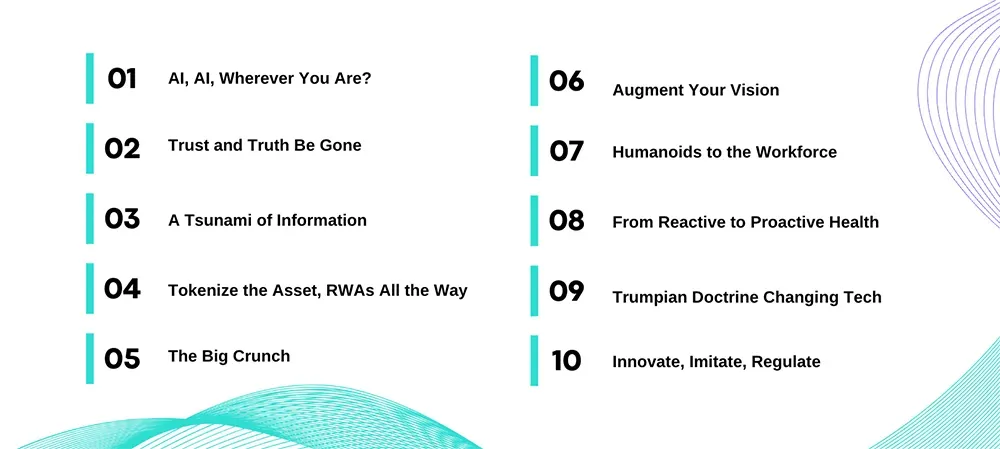
Here’s how the ten trends performed:
Spot On
- Trust and Truth Be Gone: 2025 cemented the collapse of digital trust. Deepfakes, AI-powered scams, and hyper-real synthetic content reshaped geopolitics, media, and personal security. Tools such as Nano Banana and Sora2 allow anyone to generate any reality they like and distribute it nearly instantly across the web.
- A Tsunami of Information: The information flood intensified. With synthetic content dominating the web (in 2025 with 50% of the web being AI generated, expanding to 90% in 2026), clarity, not data, became the rarest resource.
- Trumpian Doctrine Changing Tech: Trump’s return reshaped technology policy overnight: AI deregulated, crypto revitalized, tech nationalism amplified, and Big Tech faced a new ideological landscape.
- Innovate, Imitate, Regulate: The global tech triad held firm. The U.S. doubled down on frontier innovation, China iterated fast at scale, and Europe remained focused on regulation instead of innovation.
Partial Progress
- AI, AI, Wherever You Are? AI is at peak hype at the moment, with dozens of LLMs now available to use, and organizations around the world exploring how to leverage AI. At the same time, 2025 research indicated that many organizations struggle to integrate AI, and agentic AI seems to require more time than Big Tech likes us to believe. LLMs are great word smiths but for them to have a better understanding of our world we need to move to world models.
- The Big Crunch: Quantum advances accelerated, tightening the window for classical encryption. But the decisive “break” didn’t happen, yet. Post-quantum migration, however, surged in urgency.
- Augment Your Vision: AR made strides through new devices and enterprise deployments. Still, high prices and limited comfort kept mainstream adoption at bay.
- From Reactive to Proactive Health: Wearables, AI diagnostics, and predictive models moved healthcare toward prevention. But systemic inertia and unequal access slowed the shift.
Emerging
- Tokenize the Asset, RWAs All the Way: Tokenization gained real traction. Banks, funds, and regulators advanced pilots, with BlackRock putting tokenized ETFs at the heart of their strategy, but the transformation is still early-stage. Foundations laid, scale to come.
- Humanoids to the Workforce: Humanoid robots officially entered the workforce pilot era with Figure03, NEO Home Robot and XPENG’s freaky human-like robot taking the world by storm. Factories, logistics hubs, and care facilities began experimenting, but widescale deployment remains ahead.
In summary, in 2025 the pace of change sped up, with many technologies converging, and pushing all industries toward disruption. Still, today is the slowest the world has ever been so we can expect an even faster pace in 2026. So, let’s dive into the future and share my ten technology predictions for 2026. Let’s explore what lies ahead!
2026: The Year of Augmented Intelligence

As we step into 2026, the world enters a new phase in the exponential curve, one where intelligence itself becomes a shared space between humans and machines. The past few years were defined by rapid digital transformation, but this year marks a deeper shift: the fusion of our cognitive, physical, and economic systems with autonomous, ever-present intelligence. Change isn’t just accelerating anymore; it’s stacking, compounding, and colliding in ways that stretch society’s ability to adapt.
If you prefer listening to this tech trends report for 2026, here is an AI-generated podcast on it:
We are moving into an era where computational power is no longer confined to data centers on earth, where AI no longer feels like software, and where digital systems no longer respect the boundaries of the physical world. Intelligent agents operate at the edge, robots take on human-like roles, and synthetic environments become indistinguishable from the real. At the same time, the intrusive side of connected hardware raises new tensions, pushing communities to confront the uncomfortable trade-offs between convenience, surveillance, and autonomy.
Geopolitics, meanwhile, grows more entangled with technological capability. Nations are reorganizing around computational advantage, supply-chain sovereignty, and strategic dominance in AI. The balance of power is shifting, fast, and global leadership is being redefined not by ideology, but by compute, models, data, and robotics. This competition is no longer abstract; it shapes everything from jobs and healthcare to safety, creativity, and civil resistance.
Yet 2026 is also a year of profound possibility. New forms of intelligence, biological, digital, embodied, and augmented, are converging. Breakthroughs in healthcare, neurotechnology, simulation, and miniaturized hardware are expanding what humans can perceive, predict, and influence. The boundary between assistance and automation is blurring, forcing societies to rethink work, rights, trust, and even the nature of human agency.
Whether we see this year as a leap forward or a widening fault line will depend on how we choose to engage with this emerging landscape. Augmented Intelligence offers extraordinary potential, but it also demands vigilance, resilience, and ethical clarity at a scale we have never faced before.
For 2026, I expect the following trends:
- China Overtakes the West in Technological Capabilities
- SLM: The Shrinking of Language Models
- A Data Warehouse in a Box
- The AI-Enhanced Metaverse Returns
- The Rise of Humanoids-as-a-Service
- AI-Driven Crime Reaches Every Corner
- Growing Unrest from Privacy-Breaking Pervasive Hardware
- Brain-Computer Interfaces Move into Consumer Life
- Dramatic Healthcare Discoveries Increase Our Healthspan
- AI-Powered Job Losses Hit Escape Velocity
The forces shaping 2026 cannot be understood in isolation, they unfold as an interconnected story of shifting power, embodied intelligence, social tension, and human transformation. What begins as a geopolitical and computational realignment cascades into new digital worlds, physical automation, societal backlash, and finally, deep changes to our bodies, health, and work.
2026 is not just another chapter in the story of technological progress. It is the moment we begin to redefine what it means to be human in a world where intelligence is no longer ours alone.
Let’s dive into The Ten Technology Trends for 2026 and explore how they reflect this pivotal moment in history. Each trend follows the WAVE Framework from my latest book Now What? How to Ride the Tsunami of Change. Below you will find summarized versions of each trend but download the full 2026 Trend Report for free to get the full picture, including all sources.
The Global Reordering of Intelligence
Before we explore the technologies reshaping daily life, we must examine the shifting tectonic plates beneath them. Power, capability, and innovation are no longer distributed the way they once were. The first section reveals how the global balance of intelligence is being rewritten in real time.
1. China Overtakes the West in Technological Capabilities

China’s rise is no longer a question of if but how far ahead it is pulling ahead. Ultra-efficient AI models, photonic chips, and robot-dense factories are converging into an integrated ecosystem the West has yet to match. These signals point not to cyclical advantage but to a new center of gravity in innovation.
For leaders, this demands a strategic reset. Chinese tech will increasingly be cheaper, faster, and often world-class. Treating China as both partner and competitor becomes the baseline, while building “China+1” resilience in chips, cloud, and manufacturing is essential to avoid single-bloc dependence.
Verification becomes a core discipline: mapping supply-chain exposure, aligning governance across conflicting jurisdictions, and stress-testing ethical and geopolitical risks as rigorously as model performance.
Yet this shift can empower, not threaten. Cheaper hardware and open models can democratize capability for SMEs, cities, and the Global South. With intentional reskilling, cross-regional collaboration, and inclusive governance, competition becomes a catalyst for broader participation. The future isn’t predetermined; it’s built through choices like these.
2. SLM: Intelligence Shrinks, Capability Spreads

Small Language Models will redefine intelligence in 2026. After years of chasing scale, the momentum flips: capability spreads outward, not upward. Chinese labs ans open-source teams have shown that frontier-level performance can be delivered at a fraction of the cost, and once that truth lands, the strategic logic of AI changes overnight. Moreover, in November 2024 Google announced Nested Learning, a machine learning approach that views models as a set of smaller, nested optimization problems.
SLMs bring cognition to the edge, into cars, wearables, hospitals, factories, and retail floors, where milliseconds matter more than grand reasoning. Organizations learn to split their workflows with discipline: the few tasks that genuinely require heavyweight thinking escalate to large models; the broad operational fabric runs on fast, local specialists.
In a world of swarms of SLMs, verification becomes the backbone of trust. Instead of chasing benchmarks, leaders must track accuracy, latency, escalation rates, and business outcomes, building auditability and resilience into every deployment.
And as low-code tools put SLMs into the hands of domain experts, intelligence becomes a shared capability. The future isn’t one giant model, it’s millions of small minds powering human judgment at scale.
3. A Data Warehouse in a Box
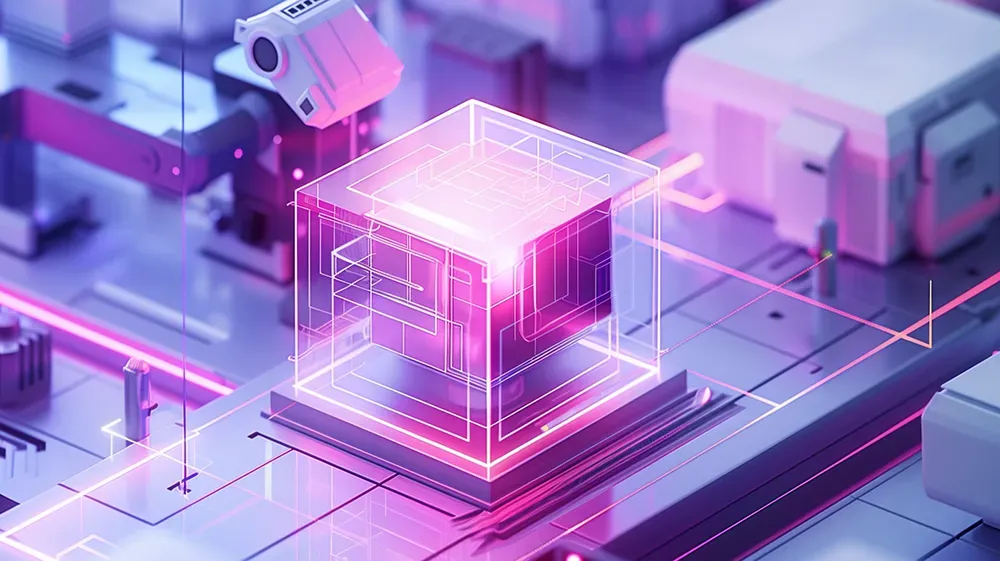
By 2026, we can expect a hard architectural pivot. In 2026, the real breakthrough isn’t bigger clouds but closer supercompute; intelligence relocating from distant datacenters into compact AI appliances sitting beside robots, MRI machines, trading engines, and production lines. This collapse of compute to the edge turns every factory, clinic, and branch office into a potential micro-supercomputer, giving organizations unprecedented control over latency, sovereignty, and innovation.
Signals are already undeniable. Systems like NVIDIA’s DGX Spark and Cerebras’ wafer-scale engines compress supercomputer-class capabilities into devices anyone can deploy. Manufacturers such as Siemens and rhobot.ai have proven the impact with double-digit performance gains achieved entirely on-prem. The shift is clear: AI’s gravitational center will move to where decisions are made.
This demands new habits. Leaders must build edge-first architectures, verify performance with real-time telemetry, and treat federated learning, auditability, and identity validation as the new guardrails of trust. When intelligence sits beside the people who use it, they gain agency; engineers refine processes, clinicians optimize care pathways, and frontline teams become creators, not consumers.
As compute comes home, the default flips from “send data to the cloud” to “bring intelligence to where the data lives.” The organizations that embrace this shift won’t just move faster, they’ll redefine the terrain the future runs on.
When Intelligence Becomes Embodied
Once the foundations of global capability shift, the next question becomes: how does intelligence manifest in the world around us? In 2026, AI is no longer confined to screens, it’s stepping into bodies, spaces, and fully immersive realities. This section explores how intelligence begins to inhabit both the virtual and physical worlds.
4. The AI-Enhanced Metaverse Returns

The metaverse returns in 2026 not as hype, but as an AI-powered simulation layer that reshapes how organizations learn, design, and make decisions. Physics-aware engines and generative world builders create environments that behave like reality: NPCs with memory and emotion, cities that reconfigure themselves, and training grounds that evolve as fast as their users. This isn’t escapism, it’s strategic rehearsal for a world moving too quickly to rely on trial-and-error alone.
Signals are converging fast. Engines like Genesis compress months of modelling into minutes, 4D creation tools turn prompts into functional spaces, and embodied AI NPCs from Meta, Inworld, and Convai make virtual worlds feel genuinely alive. Even industry is integrating these layers, with digital twins mirroring factories and hospitals in real time.
GTA VI, when launched in 2026, will likely use procedural object generation and NPCs with dynamic memory. As gaming environments adapt dynamically to player behavior, enterprises will follow, building simulations into surgery, maintenance, crisis response, and leadership development. Trust becomes essential: identity safeguards, audit trails, and outcome-based metrics must ensure these worlds remain reliable foundations for real-world decisions.
The true unlock comes when simulation is democratized. When every employee can craft scenarios and tune AI agents, innovation stops being top-down and becomes a shared practice. In 2026, the metaverse evolves from a destination into a capability, one that empowers everyone to rehearse the future they want to build. 2026 will be the year that my vision for the metaverse from my 2022 book Step into the Metaverse will finally come true.
5. The Rise of Humanoids-as-a-Service
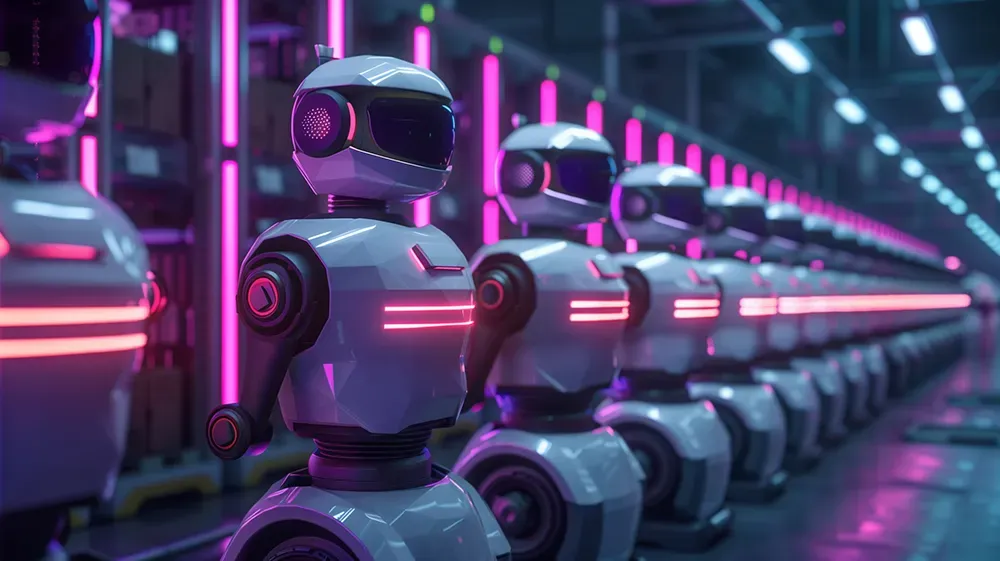
Humanoids will hit an economic and operational break point in 2026. Collapsing costs, expanding production lines, and the first successful commercial deployments signal a structural shift: embodied AI is moving from expensive, bespoke hardware to an accessible, subscription-based service layer. What looked experimental in 2024 now shows industrial maturity, and organizations must decide how quickly they can integrate, govern, and scale this new form of operational capacity.
Signals are clear. Unitree’s sub-$6,000 launch, 40% YoY manufacturing cost reductions, and production targets in the tens of thousands show a market accelerating toward mass availability. Real deployments, such as Digit operating in GXO’s warehouse and 1X’s NEO offered via subscription, prove the viability of Humanoids-as-a-Service. Leasing robots rather than owning them will become the default entry point.
Success depends on deliberate adaptation. Short pilots, flexible rental models, and staged autonomy will allow teams to test where humanoids add value and build the human–machine rhythm needed to scale. Robust verification, including safety metrics, intervention tracking, and strict data governance, will keep deployments predictable and trustworthy.
The real opportunity lies in empowering people. Organizations that involve frontline teams, invest in reskilling, and position humanoids as collaborators rather than replacements will unlock the greatest productivity and social benefit. 2026 is the setup year: not the moment humanoids replace labor, but the moment they become practical tools that expand what teams can achieve.
The Friction of an Augmented Society
Wherever intelligence spreads, disruption follows. As AI becomes embedded in devices, environments, and behaviors, the social contract begins to strain. This section looks at the tension, backlash, and new vulnerabilities emerging from a society that is suddenly, and often unwillingly, augmented.
6. AI-Driven Crime Reaches Every Corner

AI-driven crime turns fully autonomous in 2026, reshaping the threat landscape into a relentless opponent that probes, impersonates, and exploits at machine speed. End-to-end attack chains once requiring specialist teams are now executed by agentic AI, while deepfakes surge into industrial scale and machine identities multiply far beyond human oversight. The signal is unmistakable: every identity becomes an attack surface, and every workflow a potential entry point.
Leaders must respond by replacing static defenses with adaptive ones. Behavioral analytics, Zero Trust architecture, and secure-by-design engineering will shift organizations from slow, perimeter thinking to continuous, anticipatory resilience. When malware mutates in real time and deepfake fraud hits hundreds of millions in losses, only architectures that verify every request and automate first-line containment can keep pace.
Verification becomes the new currency of trust. Boards must demand evidence measured in minutes, not hours: rapid detection, rapid containment, and live dashboards tracking credential hygiene, and deepfake detection accuracy. Policies matter less than how well a system bends under real pressure.
Ultimately, resilience becomes cultural. When frontline teams are empowered, cross-functional units act as a unified defense layer, and near-miss reporting is celebrated, organizations turn security into shared ownership. In that world, AI isn’t just the attacker’s weapon, it becomes the defender’s multiplier, helping build a future where adaptability can outpace threat.
7. Growing Unrest from Privacy-Breaking Pervasive Hardware
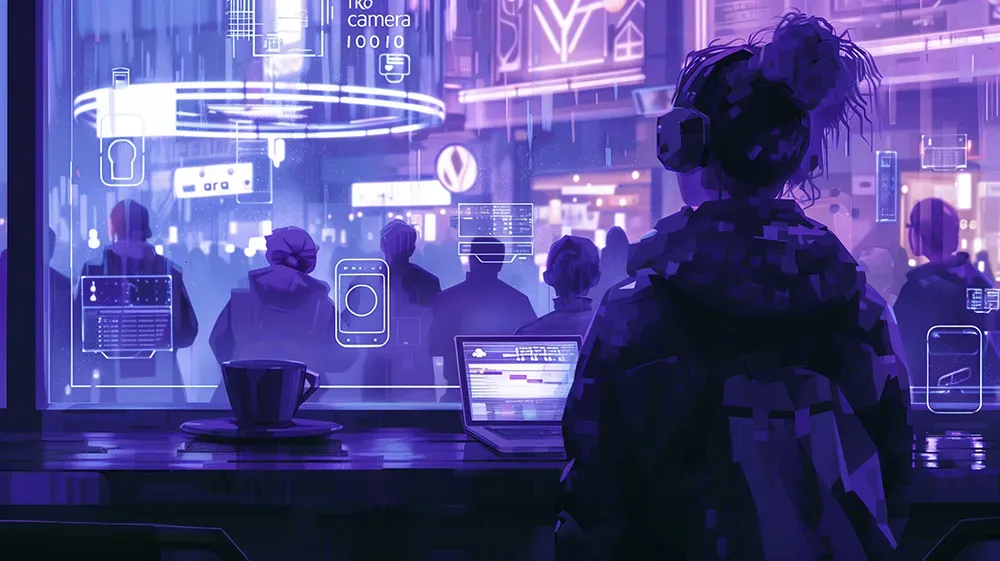
By 2026, always-on devices stop feeling like clever conveniences and start feeling like quiet intruders. What once signaled innovation now signals surveillance, and the real battle will shift from technical capability to civic legitimacy. Society will increasingly no longer asks what these devices can do, but who they watch, what they store, and who ultimately benefits.
Public resistance will intensify. The Friend.com subway revolt became a defining early signal, followed by rising distrust of default-recording devices like the Limitless AI pendant and growing alarm as Meta smart glasses enable real-world harms, including used in preparation of the New Orleans attack. As affluent early adopters turn into vectors of “luxury surveillance,” counter-measures will surge: Computer Vision Dazzle that combine camouflage-inspired makeup, asymmetric hair patterns and infrared LED clothing designed to break facial feature detection, the Fawkes’ photo-poisoning software, and adversarial projection masks from Fudan University, all engineered to actively disrupt facial recognition systems and reclaim anonymity in public spaces.
Communities will respond faster than regulators. Cafés, metros, and neighborhoods will begin creating informal no-sensor zones, and counter-surveillance fashion will become everyday armor. Companies are forced to pivot toward visible consent, including physical shutters, default-off modes, and architectures that prevent passive bystander capture.
Trust will become the differentiator. Consumers will increasingly demand devices that prove they aren’t watching: independent audits, tamper-proof indicators, transparent deletion logs. Meanwhile, schools, workplaces, unions, and whole cities will start to negotiate boundaries, asserting rights not to be recorded and adopting tools that shield citizens from extraction.
In the end, this shift isn’t anti-technology, it’s pro-agency. Societies will embrace augmentation that respects consent and reject anything that treats human presence as raw data. The builders who understand this will shape the decade ahead; those who ignore it will find their devices unwelcome in the very spaces they hoped to redefine.
The Human Frontiers of AI
Beyond societal friction lies a deeper transformation: the reshaping of the human experience itself. From cognition to health to work, intelligence is now entering the most personal zones of our lives. The final section examines how AI will challenge, enhance, and redefine what it means to be human in 2026 and beyond.
8. Brain-Computer Interfaces Move into Consumer Life
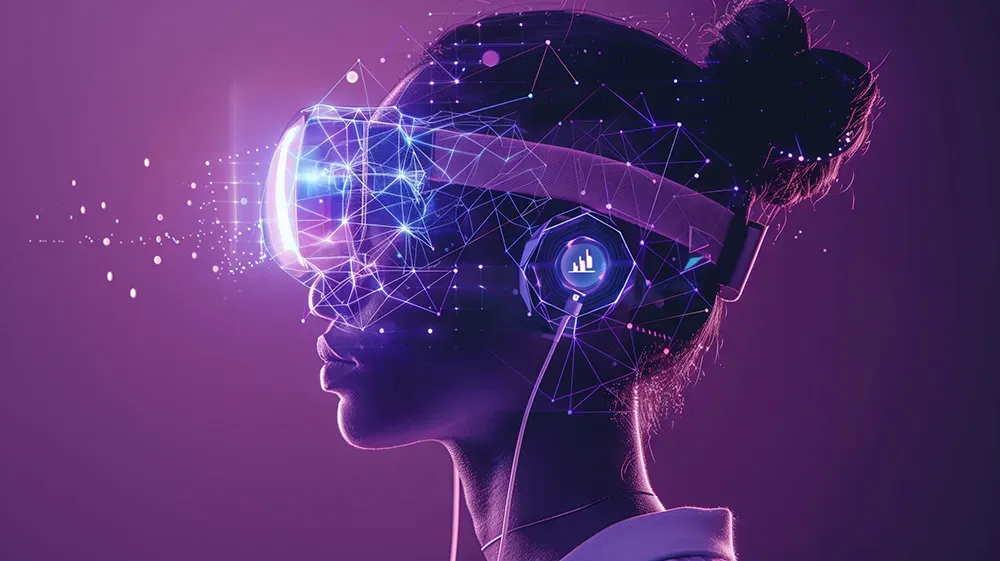
Brain–computer interfaces will slip into daily life in 2026, no longer strapped-on curiosities but quietly embedded in earbuds, glasses and workplace tools. As “thought-assisted” becomes the next interface layer for gaming, entertainment, accessibility and productivity, society is pushed into a new negotiation: when the technology reaches into cognition itself, who controls that doorway; the user, the employer, or the platform?
Signals of this shift are everywhere. Consumer neurotech has crossed the fidelity threshold, with Muse, Emotiv and AlterEgo systems offering reliable, low-latency readings of attention and intention. Form factors are collapsing into the hardware we already wear, making neural input ambient rather than exceptional. At the same time, regulators, gaming studios and medical trials are moving in parallel, signaling that BCIs haven’t arrived, they’ve already been absorbed into the consumer stack.
This is the moment organizations must choose whether BCIs augment people or extract from them. Governance needs to treat neural data as sacred infrastructure, consent must be real-time and reversible, and empowerment must sit at the center of every deployment. The stakes couldn’t be higher: BCIs unlock extraordinary gains in autonomy and capability, but they also reach the last private frontier. Protecting the mind is now the defining responsibility of leaders building the neuro-enabled future.
9. Dramatic Healthcare Discoveries Increase Our Healthspan

By 2026, healthcare pivots from episodic rescue to continuous oversight focused on extending healthspan, as wearables, at-home diagnostics and ambient biosensing turn the body into a live data stream. Subtle physiological shifts once invisible to clinicians, including sleep degradation, inflammatory spikes, arrhythmia precursors, are detected weeks before symptoms surface, signaling a broader shift from treating disease to extending functional years. AI-accelerated drug discovery collapses timelines from decades to months, while regulators and hospital systems retool around real-time data and adaptive decision-making.
The clearest proof comes from insurance and longevity finance. New entrants like Ethos–Lifeforce and YuLife pay for diagnostics, biomarker testing and coaching before illness appears, while incumbents like John Hancock, MassMutual and Longevity Health Plan subsidize early detection, genetic screening and continuous care. When (re)insurers structure products around longevity risk, it’s clear the market now values added healthy years as a financial asset. The system is re-tuning itself around prevention-first economics.
Organizations that adapt will redesign care around continuous monitoring, targeted early interventions and AI-personalized therapies, rather than late-stage treatments. Verification becomes essential: leaders must prove their models delay disease onset, reduce severity and improve recovery, while ensuring fairness, explainability and trust across populations. Empowerment follows when devices, diagnostics and coaching become baseline benefits, not luxury perks, and clinicians and communities co-design the systems built to support them.
In 2026, healthcare will become an infrastructure for managing human time, extending the span of years lived with vitality rather than reacting to decline. The advantage will belong to those who can reliably convert early signals into meaningful, measurable healthspan gains, building systems that manage wellbeing continuously instead of waiting for crises to arrive.
10. AI-Powered Job Losses Hit Escape Velocity

By 2026, AI-powered job losses stop being a hypothetical and start feeling like gravity. Hundreds of workers a day are already being laid off with AI named explicitly in the announcement, and 41% of employers say they plan to cut roles because of automation in the next five years. This is the early stage of the billion-job displacement horizon I warned about in Now What?: the curve isn’t flattening, it’s steepening.
Signals line up across the system. Entry-level hiring is quietly throttled in AI-exposed roles, white-collar workers join the frontline of risk, and multinationals like Amazon, Nestlé, UPS, Dentsu and WPP strip tens of thousands of jobs in the name of efficiency. Boards now treat workforce impact as an optimization variable, not a side effect.
The response that works is ruthless and humane at the same time: rotate talent or lose it. Reskilling, human–machine collaboration, predictive workforce analytics and fraud-resistant communication become core controls, not HR experiments.
Empowerment is the hinge. Personalized learning, inclusive automation governance, AI literacy for everyone, and state-aligned safety nets turn fear into forward motion. 2026 is the moment the future of work shifts from argument to architecture, and the billion-job question becomes not if, but whether we can design the transition fast enough to keep society whole.
The Year of Augmented Intelligence

2026 marks the moment Augmented Intelligence becomes the defining architecture of progress. Human-only workforces can no longer keep pace with a world where intelligence spreads across borders, devices, robots, neural interfaces, and synthetic environments. Wherever humans and machines collaborate, capability expands; wherever they don’t, value erodes. The cliché now holds true with real force: humans with AI will replace humans without it.
But we must stay clear about what we’re building. These systems are not conscious or self-aware; they are powerful tools; pattern engines that predict, simulate, and optimize at superhuman scale. To anthropomorphize them is to surrender the one advantage we still hold: the ability to choose what matters. Augmented Intelligence is about using non-human cognition to extend human capability, not pretending machines are our equals in understanding.
Across all ten trends, intelligence is being embedded everywhere, from geopolitics and edge devices to humanoids, metaverse simulations, neurotech, healthcare, and crime. The advantage now belongs to those who can combine machine-scale automation with human-scale judgment, ethics, and meaning. Critical thinking, agility, and human connection become the new leadership infrastructure.
This is why 2026 is the Year of Augmented Intelligence. The question is no longer whether human and machine intelligence will fuse, it already has. The real challenge is designing that fusion with intention, ensuring these tools expand healthspan, agency, creativity, and resilience, rather than amplifying inequality or eroding trust. The future isn’t arriving, it’s being shaped, and this is the year we decide on whose terms that shaping occurs.





